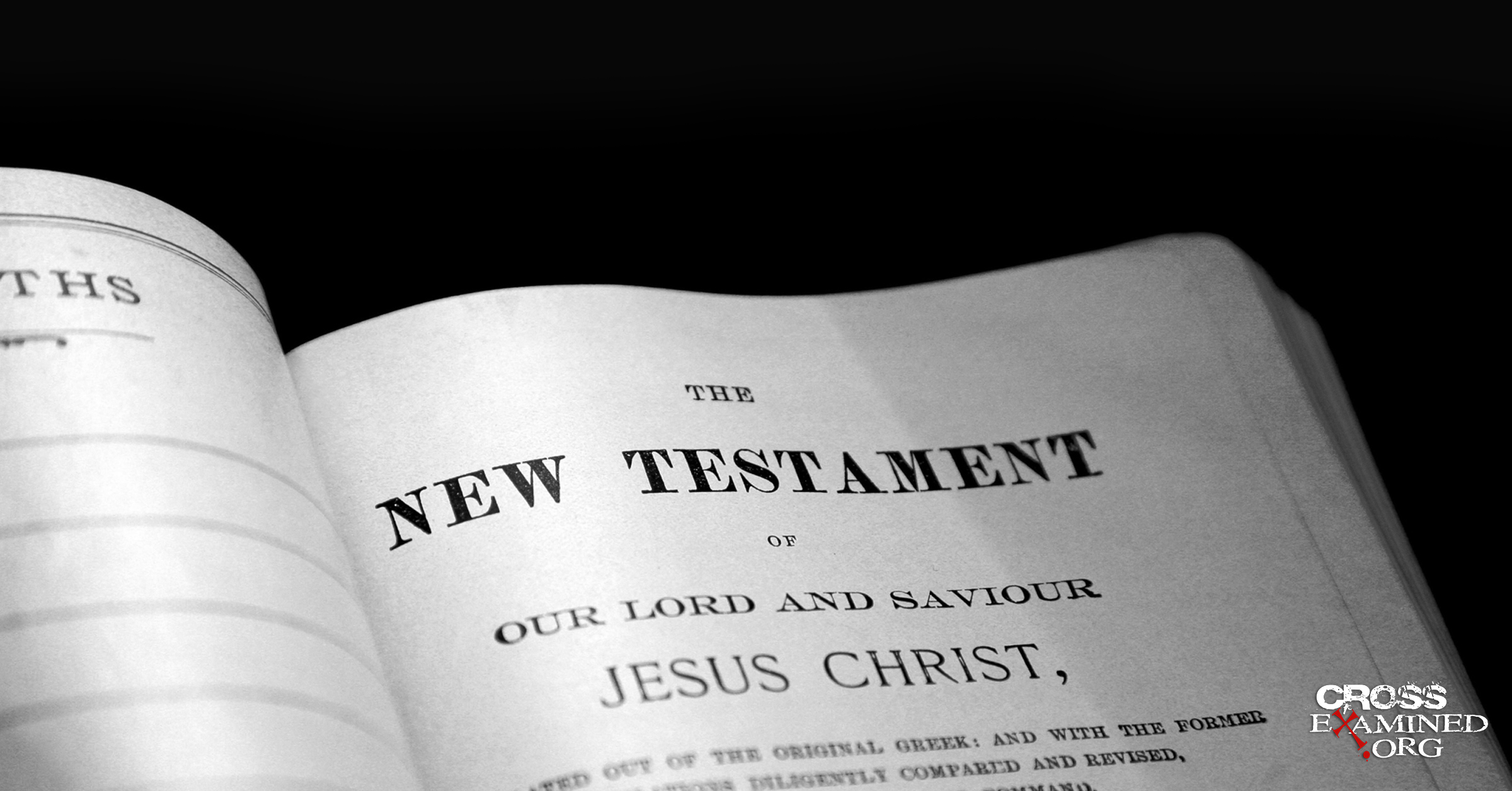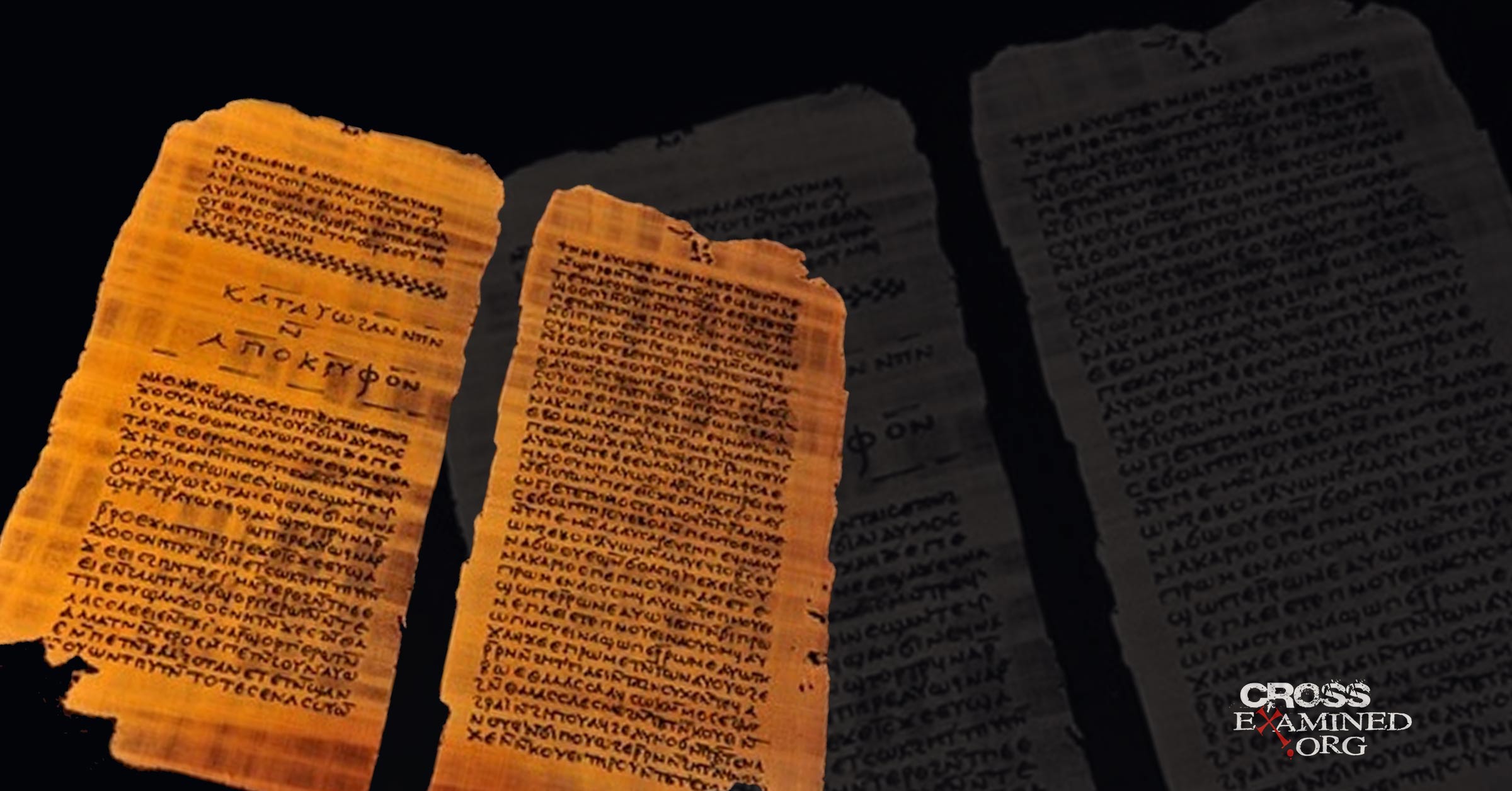By Erik Manning
2 Timothy 3:16 says that all Scripture is “God-breathed.” Of course for Christians, this would include 2 Timothy, as well as the rest of the pastoral epistles. Skeptics find this verse to be ironic because many biblical critics think that the pastoral epistles were forgeries.
These letters claim to be written by the Apostle Paul, but they allegedly were really written sometime in the early 2nd-century, long after Paul was dead. Apparently, the forger wanted to address some doctrinal issues, and their own name wasn’t authoritative enough, so they borrowed Paul’s. So the “God-breathed” New Testament apparently contains some pious lies.
But are the critical arguments against the Pauline authorship of the Pastoral Epistles really an open and shut case? Not really. In fact, there’s some very good evidence that Paul did write these letters, and the arguments of the critics aren’t really all that strong.
This will be a 2-part series. First, we’ll first look at the positive case for Pauline authorship before digging into the critics’ objections in the next post.
The witness of the early church fathers
If there was anyone in a spot to know who wrote 1st and 2nd Timothy, it would have been the church father, Polycarp. In his letter to the Philippian church written in about 110 AD, Polycarp quoted 1 Timothy 3:8, 6:7, 6:10, and 2 Timothy 2:12. He also mentions Paul by name four times in his letter, including some indications that he was familiar with the apostle’s martyrdom.
On the significance of these early patristic quotes, here’s Biblical scholar Kenneth Berding. He makes two main observations in regards to Polycarp’s use of 1 and 2 Timothy:
“Observation #1: The first is that Polycarp clusters allusions to Paul’s writings around each of the three times that he mentions Paul’s name explicitly (in chapters 3, 9, and 11). You see, Polycarp is like some elderly Christians you may have met in your life who are so immersed in the Bible that they almost talk like the Bible. Polycarp had huge sections of the Old and New Testaments committed to memory. His letter could almost be described as a pastiche of allusions to various writings, about half of which are originally Paul’s. (His connection to Paul in this letter makes sense, of course, since he is writing his letter to a Pauline congregation….the Philippians!) Polycarp pretty randomly mixes allusions to Paul’s writings (half of his total allusions) with allusions to other writings (e.g., Psalms, Matthew, 1 Peter, 1 John). But there is one significant exception: when he mentions “Paul,” he clusters allusions to Paul right after the mention of his name. He does this all three times he mentions Paul, showing that this is a pattern.
Observation #2: In the first “cluster” of Pauline allusions are two clear allusions to 1 Timothy (1 Tim. 6:10 and 6:7 found in Pol. Phil. 4.1) and in the second “cluster” is one clear allusion to 2 Timothy (2 Tim. 4:10 found in Pol. Phil. 9.2). There are none from the Pastoral Letters in the third cluster.
The implication of the first observation is that Polycarp considers the phrases in each cluster to be Pauline. The implication of the second observation is that Polycarp considers the phrases which he quotes from 1 and 2 Timothy also to be from Paul.
This, of course, doesn’t prove that Polycarp is correct in his assessment. But, as Koester writes, Polycarp was “doubtlessly the most significant ecclesiastical leader of the first half of II C. E.”
Critics say that the writer of the Pastorals was addressing Gnostic heresies of the late first and early second-century, so they were written around 110. But Polycarp was writing around the same time and seems convinced Paul wrote the letters. Irenaeus of Lyons tells us that Polycarp knew some of the apostles, in particular, John, whom Paul met. (Galatians 2:9). And he was familiar with Paul’s death, so this theory that the pastorals were written in the early 2nd-century is pretty strained.
Writing some 40-50 years later, Irenaeus explicitly mentions that Paul is the author of the Pastoral Letters. In his work Against Heresies, Irenaeus writes regarding heretics and says: “Paul commands us, ‘after a first and second admonition, to avoid” (Titus 3:10). Irenaeus also writes that Paul says to avoid those who use “novelties of words of false knowledge” (1 Tim 6:20).
Furthermore, the author of the Didache (a very early Christian writing dated to the late 1st-century) clearly quotes 1 Timothy 3:4. The Pastorals are also quoted by Clement of Alexandria (180 AD), Tertullian (220 AD) and Origen (230 AD). The witness of the early church is pretty clear. They quoted the pastorals as authoritative, and they believed the letters genuinely be from the Apostle Paul.
Undesigned Coincidences
If you’re forging a letter from someone and you want to make it believable, you’re going to color it with some overt connections with their previous letters and life-details. Some critics say this exists when the writer of Timothy talks about Paul’s former life as a church persecutor. (1 Tim. 1:13-16) But there are some less obvious interconnections in the pastorals that seem very unlikely to be intentional. These point to Paul being the genuine author of the letters.
These come in the form of undesigned coincidences. What the heck is an undesigned coincidence anyway? An undesigned coincidence (named by J.J. Blunt and first popularized by William Paley) happens when one account of an event leaves out a piece of info which is incidentally filled in by a different account, which helps to answer some natural questions raised by the first. You can read more about them here.
Lydia McGrew has recently revived and updated this older argument in her fantastic book Hidden in Plain View. It’s a must-read for anyone interested in defending the reliability of the New Testament. For our purposes, we’ll look at three undesigned coincidences where Acts and 1 and 2 Timothy seem to incidentally interlock.
Timothy’s Upbringing
The first is about Timothy himself. 2 Timothy 1:5 says “I am reminded of your sincere faith, a faith that dwelt first in your grandmother Lois and your mother Eunice, and now, I am sure, dwells in you as well.”. 2 Timothy 3:15 gives us some more details about Timothy’s upbringing: “and how from childhood you have been acquainted with the sacred writings, which are able to make you wise for salvation through faith in Christ Jesus.”
So Timothy was steeped in the Jewish scriptures and in the faith. These details fit well together with what we read in Acts 16:1-3: “Paul came also to Derbe and to Lystra. A disciple was there, named Timothy, the son of a Jewish woman who was a believer, but his father was a Greek. He was well spoken of by the brothers at Lystra and Iconium. Paul wanted Timothy to accompany him, and he took him and circumcised him because of the Jews who were in those places, for they all knew that his father was a Greek.”
In Acts, we learned Timothy’s father was Greek and apparently drew the line at circumcision, but his mother was a Jewish convert to Christianity. That’s why he would’ve been familiar with the scriptures since he was a child. 2 Timothy mentions his grandmother but not his father. Neither group of details seems to be in connection with the other. McGrew concludes that “this undesigned coincidence has the ring of truth. Timothy’s father was a Greek, and his mother was Jewish, he was raised from childhood in the knowledge of the Old Testament Scriptures, and both the author of 2 Timothy and the author of Acts knew about him and described him accurately.” (HIPV, 200)
Timothy’s familiarity with Paul’s trials
2 Timothy 3:10-11 says: “You, however, have followed my teaching, my conduct, my aim in life, my faith, my patience, my love, my steadfastness, my persecutions and sufferings that happened to me at Antioch, at Iconium, and at Lystra—which persecutions I endured; yet from them all the Lord rescued me.” This raises an interesting question. Paul went through a lot of persecutions, so why mention Antioch, Iconium, and Lystra as ones that Timothy would be familiar with?
In Acts 16:1, we read that Timothy was known as a believer when Paul came to Derbe and Lystra. Both cities are near Iconium, so Timothy must have been from one of them.
In the run-up to these verses, Acts gives us the rundown on the persecution of Paul experienced during his first missionary journey in Antioch (13:44–52), Iconium (14:5), and then Lystra (14:19). Paul was stoned and thought dead in Lystra in particular, so surely word got around about this event. It must’ve made quite an impression on a young believer like Timothy. Furthermore, Paul calls Timothy his “beloved child” (2 Timothy 1:2), suggesting he played a role in him becoming a Christian.
McGrew sums up this undesigned coincidence as follows: “Notice how indirect all of this is. One infers from II Timothy that Paul had some special reason to mention those persecutions to Timothy and to say that they were known to Timothy. One notes the point in Acts 13–14, where the narrative describes persecutions in those towns. One then infers from Acts 16 that Timothy was already a disciple from that region and had been converted during Paul’s previous visit to the region, described in Acts 13–14, during which the persecutions took place.” (HIPV, 203)
The Roster of Widows
For our last undesigned coincidence, we notice that in 1 Timothy 5:9-10 there are some instructions on how to help widows: “Let a widow be enrolled if she is not less than sixty years of age, having been the wife of one husband, and having a reputation for good works: if she has brought up children, has shown hospitality, has washed the feet of the saints, has cared for the afflicted, and has devoted herself to every good work.”
The conservative dating of 1 Timothy is in the early 60s, three decades after some of the stories related in Acts, which includes details of a ministry devoted to assisting widows. With that in mind, check out Acts 6:1-4: “Now in these days when the disciples were increasing in number, a complaint by the Hellenists arose against the Hebrews because their widows were being neglected in the daily distribution. And the twelve summoned the full number of the disciples and said, “It is not right that we should give up preaching the word of God to serve tables. Therefore, brothers, pick out from among you seven men of good repute, full of the Spirit and of wisdom, whom we will appoint to this duty. But we will devote ourselves to prayer and to the ministry of the word.”
So Paul implies that this listing of widows has been a tradition that’s been well-established, and he’s laying out some specifics how Timothy is to carry it out in his neck of the woods. We’d expect this kind of clarification if this practice had been carried out for a while and there needed to be some further practical instructions given since some women were abusing the system. (1 Tim 5:13-14)
Here’s William Paley’s summary on this particular undesigned coincidence: “Now this is the way a man writers, who is conscious that he is writing to persons already acquainted with the subject of his letter; and who, he knows, will readily apprehend and apply what he says by virtue of their being so acquainted: but it is not the way in which a man writes upon any other occasion” (Horae Paulinae, pp 300-301)
Personal References
There are a lot of personal references made in the pastorals. The writer mentions a lot of individuals that he had a connection with during his missionary journeys. In 1 Timothy 1:20, he names Hymenaeus and Alexander as false teachers.
In 2 Timothy, he not only mentions Eunice and Lois by name (which we touched on earlier) but he also blesses Onesiphorus for his kindness that he showed him at Rome and Ephesus (2 Tim 1:16-18) He talks about a number of disciples forsaking him during his trials, such as Demas, Crescens and Titus. (v. 4:10-11) He mentions Mark and Luke and asks Timothy to bring him his scrolls. (v11-13) He then asks Timothy to greet Priscilla and Aquila. He mentions Erastus and says he left Trophimus sick in Miletus. (v. 19-20)
In Titus 3:12, he asks Titus to join him once Artemas or Tychicus arrive to replace him. He also mentions some fellow workers, like Apollos and Zenas the lawyer (Titus 3:12-13)
If such allusions to people and circumstances were spun out of thin air by a forger pretending to be Paul, you’d think that such a sham would be easily exposed. But as we said earlier, none of the church fathers doubted the letters’ genuineness.
Paul wrote the Pastorals
There’s some very good evidence for the genuineness of Paul’s letters to Timothy that seems to go ignored by critics. They tend to focus on more granular internal inconsistencies and quibbles about grammar, which we’ll discuss in my next post. But as we’ve seen, the witness of the early church strongly favors that Paul wrote these letters based on their statements and use of the letters. And the internal evidence of undesigned coincidences between Acts and the pastoral letters is another strong argument in favor of the genuineness of the letters. The claim that Paul wrote these letters stands on solid ground.
Recommended resources related to the topic:
The New Testament: Too Embarrassing to Be False by Frank Turek (DVD, Mp3 and Mp4)
Why We Know the New Testament Writers Told the Truth by Frank Turek (DVD, Mp3 and Mp4)
The Top Ten Reasons We Know the NT Writers Told the Truth by Frank Turek (Mp3)
Erik Manning is a former atheist turned Christian after an experience with the Holy Spirit. He’s a freelance baseball writer and digital marketing specialist who is passionate about the intersection of evangelism and apologetics.










